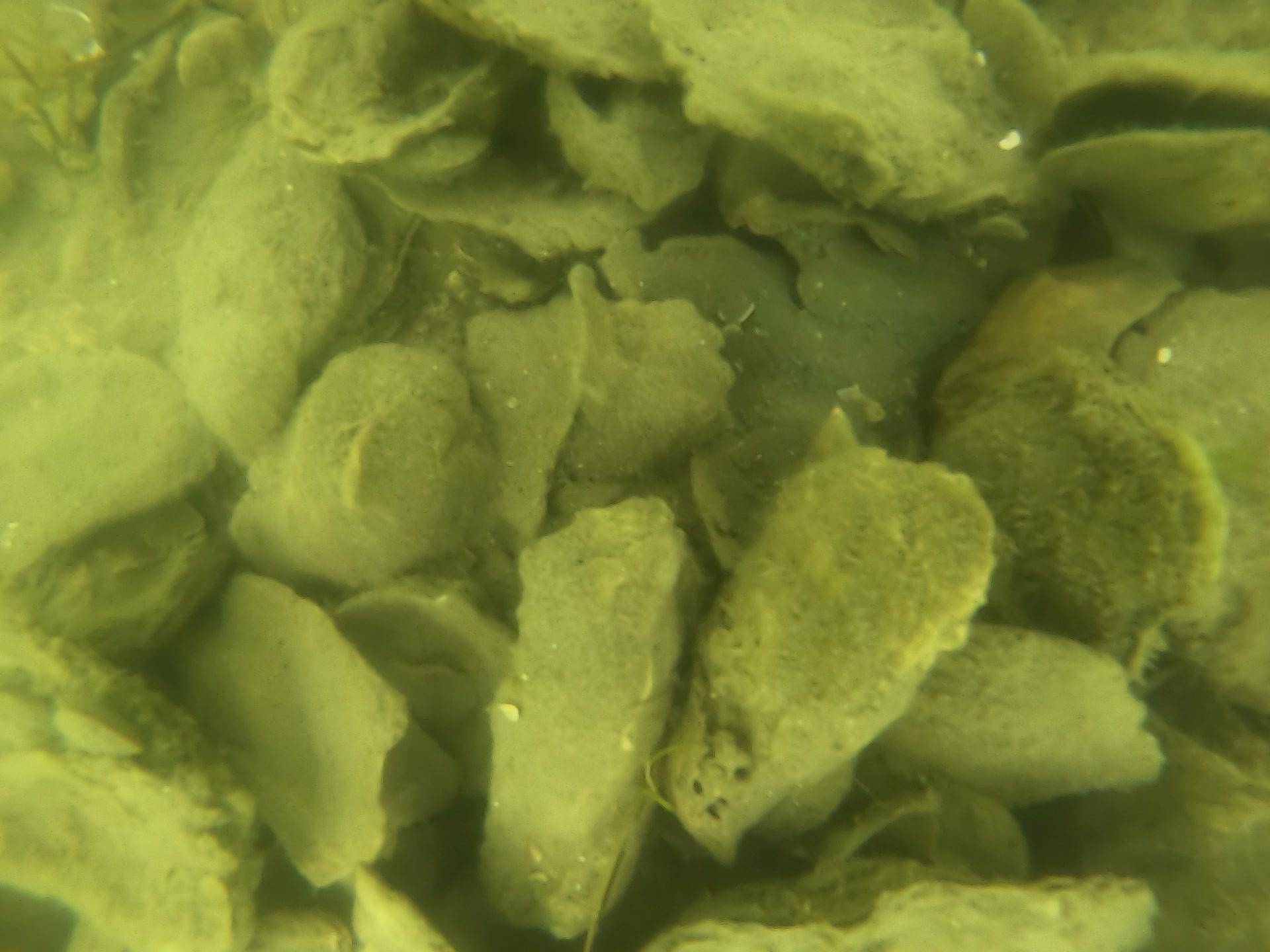The traditional method of oyster production is bottom culture, a shellfish farming practice in which the organisms are placed directly on the sea floor. Growers obtain a Submerged Land Lease (SLL) granted by the State of Maryland. This creates a landlord/tenant relationship between the grower and the State, allowing the leaseholder to grow oysters using methods that mimic a natural oyster reef. The Chesapeake Bay region's extensive estuarine environment provides vast acreage at the proper depth and with sufficient food for filter feeding bivalves to flourish. The bottom substrate should be firm enough to support the oysters and prevent them from sinking, which is often an issue on muddy and sandy bottoms.
The bottom is prepared with oyster shell or another base material so that it is above the bottom. Spat set on shell can be spread on the area and the base keeps the spat or small oysters from sinking into the bottom and smothering. It is important to choose the location of the SLL carefully. If the area has too much soft sediment it will require a great deal of shell to create the base. Base material, especially oyster shell, is hard to obtain and getting more expensive as demand increases.

In areas where there is a history of frequent natural spat production the shell may get a “set” fairly regularly. If so, the grower may wish to only supplement this with hatchery seed to ensure an annual rate of production or to grow certain animals such as triploid for summer harvest. This supplemental spat can be produced using Remote Setting practices. Bottom culture provides a lower cost production method to water column culture but must be managed like any other aquaculture crop. Spat on shell helps protect young oysters from many predators but as the young oysters grow, they must be worked with harvest gear and broken apart to create oysters with better shape and size. Leaving them on the shell throughout their growing cycle will result in oysters that have less marketability due to remaining in clumps and being considered less desirable.
Bottom Culture Cost Analysis Publication
